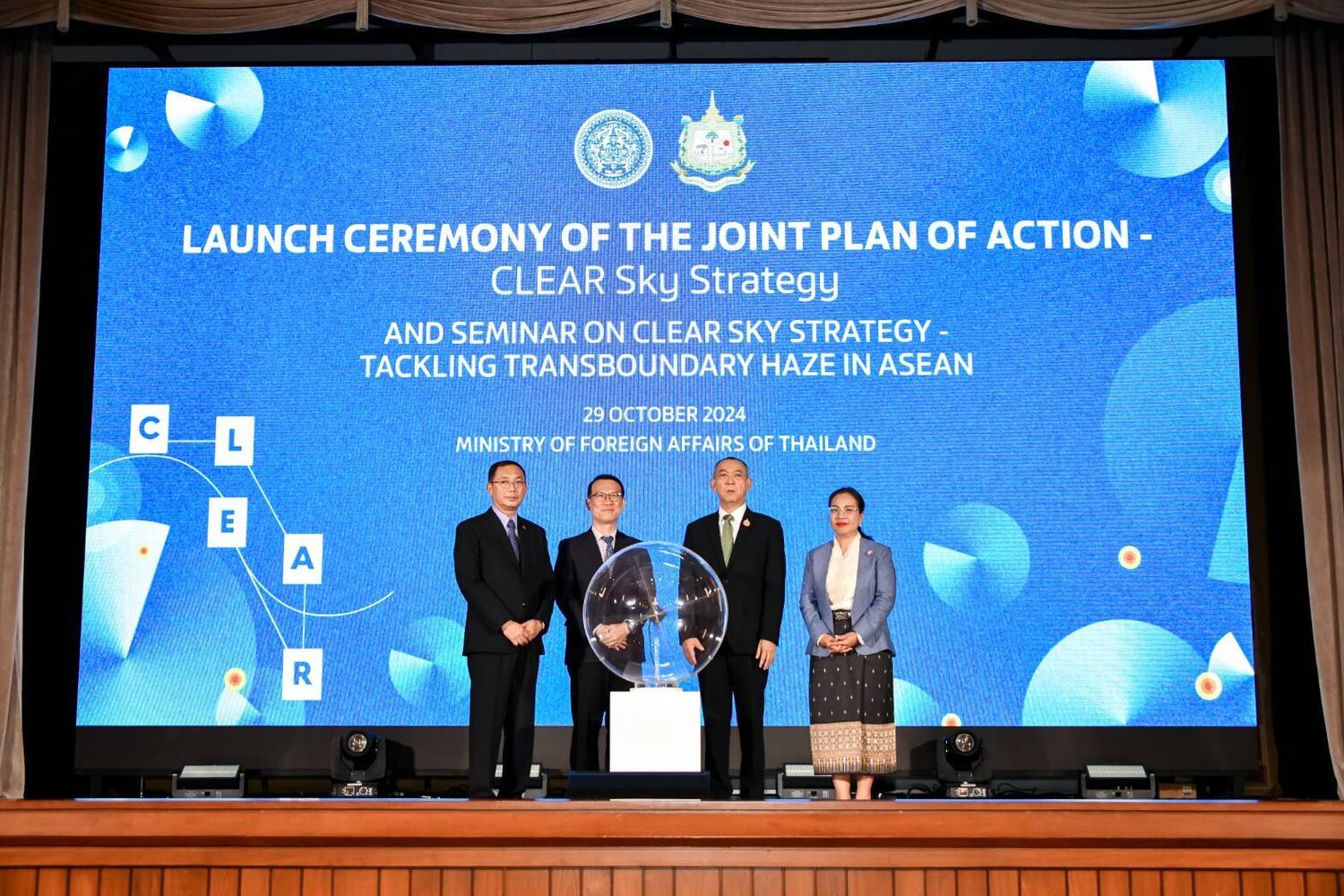Dangerously poor air quality is likely to continue blighting the north of Thailand and neighboring countries during the dry season, experts said, despite the recent announcement of a “clear sky” plan including a hotline with Myanmar and Laos.
Burning of agricultural land, much of it converted from forest to maize for animal feed, caused severe pollution in northern Thailand in the first half of 2023, along with Laos and Myanmar’s Shan state.
As the dry season approaches again, the environment ministers of Thailand, Laos and Myanmar and Thailand’s foreign minister this week said they’re committed to tackling air pollution. The World Health Organization estimates poor air quality causes millions of deaths globally every year.
“I’m not so optimistic about what is going to happen in the next few years. But we are starting right now, I think we can build [on this clear sky strategy]. Everyone knows this is affecting the health of their children,” said Aekkapol Aekakkararungroj of the Asian Disaster Preparedness Center.
“I think we are going to see better things after five years,” Aekakkararungroj, the center’s air pollution and geospatial imaging expert, told a haze seminar in Bangkok where the three countries’ ministers announced their plan for the hotline.
Southeast Asia is a global hotspot for haze and air pollution, particularly cross-border disasters that have their roots in land conversion for large scale agriculture.
Companies in Indonesia, for example, have drained extensive areas of peatland for pulpwood and palm oil plantations, making that land particularly combustible. Massive fires in Indonesia in 2015 sent haze into Singapore, Malaysia and southern Thailand and according to a joint Harvard and Columbia study hastened about 100,000 deaths across the region.

At Tuesday’s event, Thailand, Myanmar and Laos publicized a clear sky plan that for its first stage involves setting up a hotline, developing fire risk maps and “capacity building.”
Government ministers from the three countries put their hands onto a large glowing sphere at a launch ceremony in Bangkok. A giant screen behind them showed haze pulsating menacingly over a map of the region.
“This launching of the clear sky strategy is good for our countries because in the future we can work very closely. We can set up the hotline, sharing the challenges, difficulties and opportunities,” Khin Maung Yi, Myanmar’s environment minister, told Radio Free Asia.
“In Myanmar we are now reducing fire hot spots,” he said.
Maize for animal feed
Greenpeace Southeast Asia said the governmental efforts lack a crucial ingredient – accountability for “Big Meat” agricultural conglomerates such as Thailand’s Charoen Pokphand.
“We truly hope that the government is brave enough to make real change and protect people’s health before profit,” food and forest campaigner, Rattanasiri Kittikongnapang, told RFA.
“Without a traceability system and enforcing accountability of the meat and agribusiness, the government’s effort … will never be able to stop the haze at the source,” she said.
RELATED STORIES
Indonesia, Malaysia could see worst haze in five years, report warns
Bangkok’s ‘Hazibition’ points finger at corporations for toxic haze in lower Mekong
Report: Forest encroachment for maize cultivation increased in Lower Mekong
During the 2023 haze, thousands went to hospitals with respiratory problems and workers in Chiang Mai, Thailand, which was ranked at that time as among the world’s most polluted cities, were told to stay indoors and work from home.
The two main culprits behind the hazardous pollution, 16 times worse in some areas than healthy levels, were forest fires and the burning of ever-wider fields of corn stubble after the February harvest to clear land for the planting season in May.
More than 40% of transboundary haze in the lower Mekong region results from fires in industrial maize plantations for animal feed, according to research by Greenpeace, more than other types of agriculture and forest fires.
Expansion of maize growing for feed grains was behind about 1.9 million hectares of deforestation in the lower Mekong region from 2015-2023, much of it in Laos, according to Greenpeace’s analysis of satellite imagery.
Aekakkararungroj, of the disaster preparedness center, said satellite detection of fires could in future be combined with environmental data and hospital health records to predict not only the risk of haze but the likely impact on people’s health including the number of deaths.
“Government – what can get them on the edge? Money and the number of dead people,” he said. “That will really wake them up.”
Edited by Mike Firn
This content originally appeared on Radio Free Asia and was authored by Stephen Wright for RFA.
This post was originally published on Radio Free.